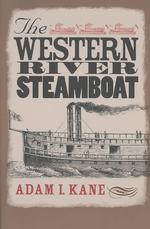Full Description
For upper level undergraduate and graduate level courses, Assessment in Special Education: Practical Applications for Teachers presents a teacher-focused approach structured around the three primary ways in which practicing special educators use assessment. The text addresses why the assessments are used, how they are implemented, and what the results mean. This resource bridges theory and practice with case studies, evidence-based strategies, and clear guidance on integrating assessments into everyday practice. Utilizing practice-based learning, this text is designed to help pre-service and early-career teachers situate new knowledge in meaningful contexts.
The text is organized into three sections specifically based on the sequence of interactions that special education teachers are likely to have with students new to their caseloads:
Section I. Special Education Eligibility Determinations—Focuses on the comprehensive, multi-disciplinary evaluation process that is used to determine if a student qualifies for special education services under the Individuals with Disabilities Education Improvement Act (IDEA). This section includes information about administering and interpreting formal assessments that guide legal decisions and intervention planning.
Section II. Progress Monitoring and Data-Based Decision Making—Covers a set of assessment practices that are used by special educators and other intervention providers to monitor student progress toward individualized goals across academic and behavioral outcomes. This book is unique among comprehensive assessment texts in providing detailed guidance about curriculum-based measurement, general outcome measures, and mastery measures as tools to guide intervention and help students maximize learning.
Section III. Classroom Assessment—Provides a guide to using assessment as a tool for equity, engagement, and daily instructional decisions. This section explores how teachers can design and implement classroom assessments that not only measure learning but actively enhance it.
Key Features
Chapter learning objectives
Case studies providing context for the concepts and skills addressed in each chapter
Application opportunities aligned with the chapter objectives
Bolded key vocabulary with in-text definitions
Chapter review questions
PluralPlus Online AncillariesFor instructors: PowerPoint Slides, Test Bank, Sample Syllabus, Video and Website Links, Vocabulary Matching Curriculum-Based-Measurement
For students: eFlashcards, Links to Related Resources, Forms/Documents
Contents
Contents
About the Authors
Introduction. Introduction to Assessment for Special Education
Chapter Objectives
What Is Educational Assessment?
Why Do We Assess and What Assessments Meet These
Purposes?
How Do We Assess?
Ethical Considerations in Assessment
Conclusion and Next Steps
Resources
Chapter Review Questions
Section I. Special Education Eligibility Determinations
Chapter 1. Assessment Within Multi-Tiered Systems of Support
Chapter Objectives
Why Are Multi-Tiered Systems of Support Important?
Misconception 1: MTSS Is All About the Tiers
Misconception 2: Tier Labels Apply to Students
Misconception 3: Tiered Supports Are Provided by Specialists
Misconception 4: The Point of MTSS Is to Determine if a Student Needs Special Education
Why Do We Evaluate Within Multi-Tiered Systems of Support?
Determine the Effectiveness of Tier 1 Instruction
Identify Students in Need of Additional Support
Monitor the Effectiveness of Tier 2 and Tier 3 Interventions
What Assessments Do We Use?
Universal Screenings
Progress Monitoring
Conclusion
Resources
Chapter Review Questions
Chapter 2. Formal Assessments for Special Education Eligibility
Chapter Objectives
How Do We Ensure Educational Access for All?
Why Do We Evaluate?
How Do We Evaluate?
Step 1: Referral for Evaluation
Step 2: Review Existing Information
Step 3: Identify Additional Data Needed
Step 4: Obtain Parental Consent for Evaluation
Step 5: Conduct Assessments
Step 6: Review Data and Determine Eligibility
What Types of Assessments Inform the Multidisciplinary Team?
Direct and Indirect Assessments
Individually Administered and Group Administered Assessments
Informal and Standardized Assessments
Criterion-Referenced and Norm-Referenced Assessments
Conclusion
Resources
Chapter Review Questions
Chapter 3. Administering, Scoring, and Interpreting Norm-Referenced Standardized Assessments
Chapter Objectives
How Do We Ensure Validity of Standardized Assessments?
What Are the Elements of a Norm-Referenced, Standardized Assessment?
How Is the Test Content Organized?
How Do We Administer Standardized Assessments?
How Do Evaluators Prepare for Test Administration?
Administering the Assessment
How Are Assessments Scored?
Age and Grade Equivalence
Standard Scores
Standard Error of Measurement and Confidence Intervals
How Are Assessment Outcomes Shared with Multidisciplinary Team Members?
Conclusion
Resources
Chapter Review Questions
Chapter 4. Selecting Formal Assessments of Intelligence and Academic Achievement
Chapter Objectives
How Can Formal Assessments Help Us Understand Students as Learners?
What Is Intelligence and How Do We Measure It?
What Concerns Exist Around Intelligence Testing?
What Tests of Cognition and Intelligence Are Available?
Woodcock-Johnson® V Tests of Cognitive Abilities
The Wechsler Intelligence Scales
Kaufman Assessment Battery for Children-Second Edition, Normative Update
Test of Nonverbal Intelligence-Fourth Edition
What Is Academic Achievement and How Do We Measure It?
Applications to Educational Decision Making
What Tests of Academic Achievement Are Available?
Woodcock-Johnson® V Tests of Achievement
Kaufman Test of Educational Achievement™-Third Edition
Wechsler Individual Achievement Test®-Fourth Edition
Wide Range Achievement Test™-Fifth Edition
Conclusion
Resources
Chapter Review Questions
Chapter 5. Selecting Formal Assessments of Social-Emotional, Behavioral, and Functional Skills
Chapter Objectives
Why Do We Evaluate Functional Performance?
What Do Social-Emotional and Behavioral Assessments Measure?
How Are Social-Emotional and Behavioral Skills Assessed?
Conners 4th Edition
Behavior Assessment Scale for Children-Third Edition
Functional Behavior Assessment
How Are Social-Emotional and Behavioral Data Used for Eligibility?
What Do Adaptive Behavior Assessments Measure?
How Do We Measure Adaptive Skills?
Vineland Adaptive Behavior Scales-Third Edition
Adaptive Behavior Assessment System-Third Edition
Conclusion
Resources
Chapter Review Questions
Section II. Progress Monitoring and Data-Based Decision Making
Chapter 6. Overview of Curriculum-Based Measurement and Data-Based Individualization
Chapter Objectives
What Is a Curriculum-Based Measure?
Technically Adequate
Efficient
Frequent
Informative to Instruction
What Is Data-Based Individualization?
What Misconceptions Exist?
Misconception 1: Fluency Cannot Predict Reading Comprehension
Misconception 2: CBM Will Provide All That is Needed for Decision Making
Misconception 3: There Is No Evidence Base for CBM
Misconception 4: CBM Data Tell Us the Student Is Not Doing Well
Misconception 5: DBI Is Only for the Elementary Level
Misconception 6: CBM Materials Are Expensive
Misconception 7: Graphs Are Not Necessary
Misconception 8: Timed Tests Are Not Good Indicators of Achievement
Misconception 9: CBM Is Only Used in Special Education
Misconception 10: Students Do Not Like CBM for Progress Monitoring
Conclusion
Resources
Chapter Review Questions
Chapter 7. Curriculum-Based Measurement Progress Monitoring, Graph Interpretation, and Decision Making
Chapter Objectives
Why Graph CBM Data?
What Barriers Exist in Using CBM Data?
What Does a CBM Progress Monitoring Graph Look Like?
Why Is Goal Setting Important?
Approaches to Setting Goals
General Considerations for Goals
How Do Educators Make Data-Based Decisions?
Categories of Decisions
Approaches to Decision Making
Considerations When Making Decisions
How Do We Communicate Progress?
Conclusion
Resources
Chapter Review Questions
Chapter 8. Curriculum-Based Measurement for Progress Monitoring in Reading
Chapter Objectives
What Reading Skills Can Be Progress Monitored With Curriculum-Based Measurement?
How Are Reading CBMs Selected and Administered?
Selecting Appropriate Measures
Administering Additional CBMs
Phoneme Segmentation Fluency
Nonsense Word Fluency
How Are Reading CBMs Graphed and Interpreted?
Oral Reading Fluency
How Do CBM Data Guide Instructional Adjustments for Reading?
Conclusion
Resources
Chapter Review Questions
Chapter 9. Curriculum-Based Measurement for Progress Monitoring in Writing
Chapter Objectives
Why Do We Assess With Curriculum-Based Measurement for Writing?
What Curriculum-Based Measurements Exist for Writing?
CBM for Early Writing Skills
CBM for Written Expression
How Are Writing CBMs Scored?
Total Words Written
Words Spelled Correctly
Correct Word Sequences
Technology and CBM-W
CBM Within DBI
How Are Writing CBMs Used for Data-Based Individualization?
Administer Appropriate CBMs
Score and Analyze
Graph the Data
Monitor Progress and Implement Decision-Making Rules
Implement Adaptations
Conclusion
Resources
Chapter Review Questions
Chapter 10. Progress Monitoring With Curriculum-Based Measurement in Math
Chapter Objectives
Why Assess With Curriculum-Based Measurement for Math?
How Is Data-Based Decision Making Used for Math?
Five-Step Data-Based Individualization Framework
What Skills Can Be Assessed Through CBM in Math?
How Are CBMs of Math Computation Administered?
How Is the M-COMP Measure Scored?
How Are the Data From Math CBM Analyzed?
How Are Baseline Scores and Goals Determined?
How Are Graphed Data Interpreted?
How Do CBM Data Guide Adjustments to Intervention?
What Measures Are Appropriate for Early Numeracy Skills?
Oral Counting
Number Identification
Missing Number
Quantity Discrimination
Math Concepts and Application Measures
Conclusion
Resources
Chapter Review Questions
Section III. Classroom Assessment
Chapter 11. Reframing Classroom Assessment as Three-Dimensional
Chapter Objectives
Why Do We Use Classroom Assessments?
How Do We Design Meaningful Classroom Assessments?
Classroom Assessments for Learning
Classroom Assessments of Learning
Classroom Assessments as Learning
How Can Teachers Select the Right Classroom Assessments?
Conclusion
Resources
Chapter Review Questions
Chapter 12. Classroom Assessments in a Standards-Based World
Chapter Objectives
Why Are the Standards so Important?
How Does Using the Assigned Curriculum Impact Standards-Based Assessment?
Professional Opportunities
How Can the Standards Inform Instruction?
Planning the Instruction
How Can Standards and Teacher Expertise Be Used in Other Content Areas?
Conducting Error Analysis
Using Error Analysis as Assessment for Learning
Conclusion
Resources
Chapter Review Questions
Chapter 13. Using Formative Assessment to Adjust Learning and Provide Meaningful Feedback
Chapter Objectives
Why Is Formative Assessment Important?
What Is the Cycle of Data-Driven Planning?
Using the Cycle to Plan Instruction
Using Formative Assessment to Adjust Instruction
How Can Formative Assessment Provide Meaningful Feedback to Students?
Creating Meaningful Feedback
Conclusion
Resources
Chapter Review Questions
Chapter 14. Using Classroom Assessments to Monitor and Improve Behavior
Chapter Objectives
What Is Behavior Data and Why Is It Important?
How Are Behavior Data Collected?
Collecting Frequency Data
Collecting Duration Data
Collecting Latency Data
Collecting Interval Data
Teaching Students to Self-Monitor
How Do We Analyze and Use Collected Data?
How Do We Determine the Purpose of An Assessment?
How are Assessment Tied to Educational Decisions?
Conclusion
Resources
Chapter Review Questions
Chapter 15. Communicating Classroom Progress to Education Partners
Chapter Objectives
What Is the Teacher's Role in Sharing Data?
How Can Teachers Make Assessment Data Clear for All Educational Partners?
Tools to Help Explain Data
How Do We Determine the Purpose of an Assessment?
How Are Assessments Tied to Educational Decisions?
Conclusion
Resources
Chapter Review Questions
Glossary
References
Index








